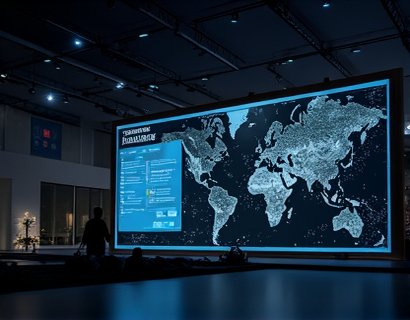Streamline Web Development: Unlocking Efficiency with Custom Placeholder Code Generation
In the fast-paced world of web development, efficiency and productivity are paramount. One crucial aspect that often gets overlooked is the generation of placeholder content, which plays a vital role in the early stages of website design and development. Placeholder code serves as a temporary solution, allowing developers and designers to visualize and structure their websites without the distraction of real content. This article delves into the importance of custom placeholder code generation and how it can significantly streamline web development processes, benefiting developers, designers, and business owners alike.
Custom placeholder code generators are tools designed to create realistic and functional placeholder content. These tools go beyond simple text generators by offering a range of customizable options, including fonts, colors, and layout structures. By leveraging such tools, web professionals can focus on the core aspects of their projects, such as design, functionality, and user experience, without getting bogged down by the need to create realistic content from scratch.
Enhancing Efficiency with Custom Placeholder Code
The primary advantage of using custom placeholder code generators is the time savings they offer. Instead of manually typing out dummy text or images, developers can generate high-quality placeholders in a fraction of the time. This efficiency is particularly beneficial for digital agencies and tech startups that handle multiple projects simultaneously. By automating the placeholder generation process, these agencies can allocate more time to strategic tasks, ultimately delivering higher-quality services to their clients.
Moreover, custom placeholder code generators enhance productivity by reducing the cognitive load on developers and designers. When creating placeholder content manually, there's a risk of inconsistency and errors, which can lead to additional debugging and redesign efforts. With a reliable generator, the content is consistent and error-free, allowing team members to work more smoothly and efficiently.
Creating Visually Appealing Content
Placeholder content is not just about functionality; it's also about aesthetics. A visually appealing website is crucial for making a good first impression and keeping visitors engaged. Custom placeholder code generators offer a range of design options, enabling users to create placeholders that closely mimic the final design. This includes customizable fonts, colors, and layout configurations, ensuring that the placeholder content aligns with the overall design vision.
For designers, this means they can present a more cohesive and professional preview to clients, highlighting the layout, typography, and color schemes before any real content is available. This can lead to better client satisfaction and fewer revisions, as the expectations are clearly set from the beginning. Additionally, visually appealing placeholders can serve as a reference for content creators, helping them understand the context and tone required for the actual content.
Customizable Tools for Diverse Needs
The beauty of custom placeholder code generators lies in their flexibility and customization options. These tools cater to a wide range of projects, from simple blogs to complex e-commerce sites. Developers can choose from various templates and themes, adjusting the placeholders to match their specific requirements. This level of customization ensures that the generated content is relevant and contextually appropriate, enhancing the overall user experience.
For example, e-commerce businesses can generate placeholders for product listings, cart interfaces, and checkout processes. This allows them to test the user flow and identify potential issues before implementing the actual content. Similarly, marketing professionals can use these tools to create placeholder landing pages for campaigns, ensuring that the design and layout are optimized for conversion rates.
Streamlining the Development Workflow
Integrating a custom placeholder code generator into the development workflow can significantly streamline the process. Here’s how it works: once a project is initiated, the generator produces placeholder content based on the specified settings. This content is then used to build the initial structure of the website, including pages, sections, and components.
The use of placeholders allows developers to set up the front-end framework, test responsiveness, and ensure cross-browser compatibility without the need for real content. This early testing phase helps identify and fix issues related to layout, typography, and functionality, reducing the likelihood of major overhauls later in the project.
Furthermore, placeholder content can be easily replaced once the real content is ready. Most generators provide a simple mechanism to swap placeholders with actual content, making the transition seamless. This approach ensures that the development process remains fluid and efficient, with minimal downtime or disruption.
Benefits for Different Stakeholders
The advantages of custom placeholder code generation extend to various stakeholders in the web development ecosystem. For developers, it means a more organized and efficient workflow, allowing them to focus on coding and design rather than content creation. Designers benefit from the ability to present polished prototypes, leading to better client interactions and project approvals. Business owners and digital agency managers can leverage these tools to deliver high-quality services faster, enhancing their reputation and client satisfaction.
For freelancers and small teams, custom placeholder generators are particularly valuable. These tools level the playing field, providing access to professional-grade design and development resources that might otherwise be out of reach. This democratization of tools empowers independent developers and small businesses to compete with larger agencies, fostering innovation and diversity in the industry.
Best Practices for Using Placeholder Code Generators
To maximize the benefits of custom placeholder code generators, it's essential to follow best practices. First, take the time to understand the tool's capabilities and customization options. Experiment with different templates and settings to create placeholders that accurately reflect your project's requirements. Consistency is key, so establish a set of design guidelines and stick to them across all placeholders.
Another best practice is to use placeholder content sparingly and strategically. While placeholders are useful for initial design and layout, they should not be used as a long-term solution. Once the real content is ready, replace the placeholders to ensure the website functions as intended with live data.
Additionally, consider the accessibility of your placeholders. Ensure that the generated content is readable and accessible to all users, including those with disabilities. This not only improves the user experience but also aligns with best practices in web development.
Conclusion
Custom placeholder code generation is a powerful tool that can significantly enhance the web development process. By streamlining the creation of temporary content, these tools save time, reduce errors, and improve overall efficiency. Whether you're a developer, designer, or business owner, incorporating a reliable placeholder generator into your workflow can lead to better project outcomes and higher client satisfaction.
As the digital landscape continues to evolve, the importance of efficient and effective web development tools cannot be overstated. Embracing custom placeholder code generation is a step towards modernizing your development process and staying competitive in the industry. By leveraging these tools, you can focus on what truly matters—creating exceptional user experiences and delivering value to your clients.











































